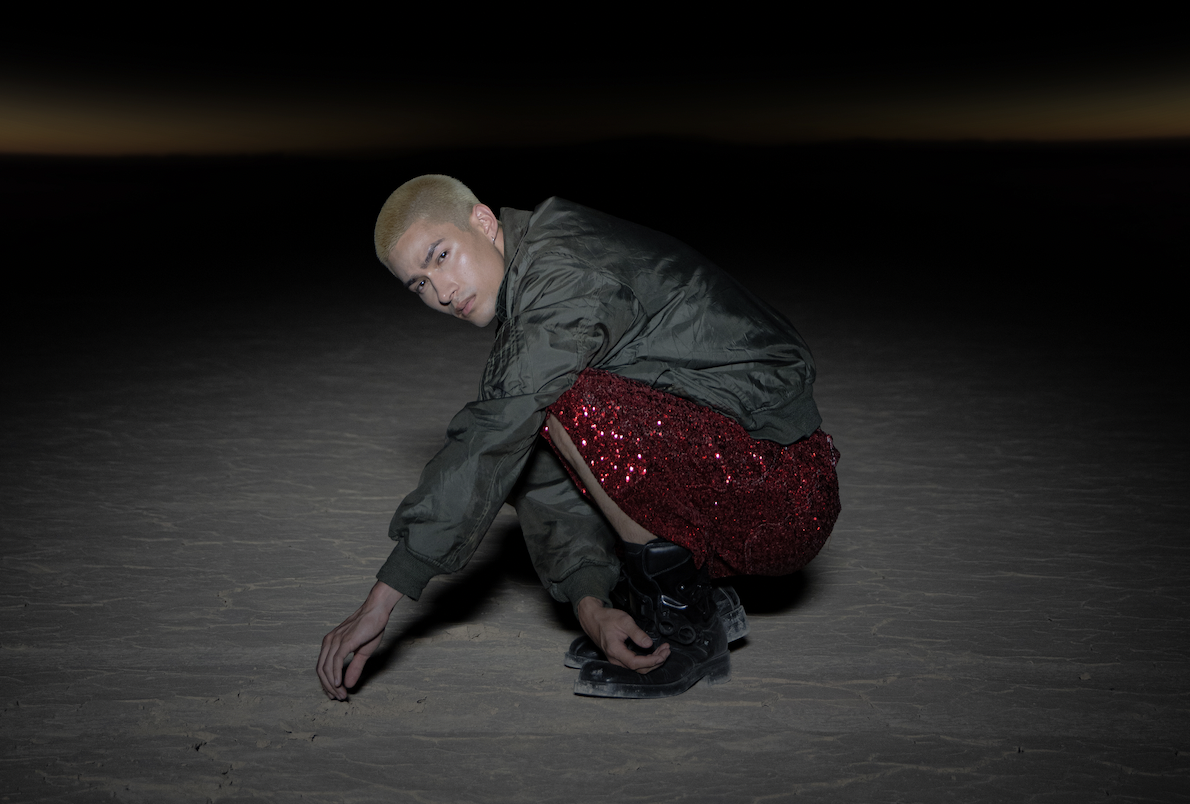Material cultural heritage — and therefore archaeology, the discipline behind its systematic excavation and analysis — has become increasingly important to China in recent years. At top levels, the Chinese government has been publicly vocal about demanding the repatriation of stolen artifacts, such as an ancient bronze tripod vessel that recently sold for £410,000 (about $555,000 USD) at private auction in the UK. The Chinese government even maintains a website to collect tips on “stolen (lost) cultural relics.”
Archaeological artifacts have also found themselves at the center of a renewed soft power push. In February, CGTN, the English-language branch of state TV network CCTV, launched a video series called “If Treasures Could Talk,” beginning with an imagined soliloquy delivered by a 6,000-year-old head.
On the domestic front, CCTV last year began airing a reality show called National Treasure, which brings together archaeologists, restorers, museum volunteers, and A-list re-enactors in an effort to make China’s millennia of history cool to the kids again. The show is supplemented with a suite of social media and photo app tie-ins, though it’s been accused by journalist Wang Chao of “twisting the truth to chase TV ratings.”
 CCTV’s Latest Reality Show Piques Chinese Youth’s Interest in “National Treasures” and Public MuseumsArticle Dec 26, 2017
CCTV’s Latest Reality Show Piques Chinese Youth’s Interest in “National Treasures” and Public MuseumsArticle Dec 26, 2017
Beyond the hype, China is also investing heavily in actual archaeological research, led by the work of the Institute of Archaeology at the Chinese Academy of Social Sciences (CASS) in Beijing.
CASS launched its first major overseas project in 2014, joining the team of Harvard archaeologist William Fash for a joint dig at the Maya site of Copán in Honduras. More recently, China sent five archaeologists to Saudi Arabia to assist with an excavation at a port on the Red Sea, according to a March report from Xinhua.
Naturally, Chinese archaeologists also have a lot to work with inside their own borders. To give an idea of what the lay of the land looks like, here are the top 10 archaeological finds inside China last year, as reported by CASS’s Institute of Archaeology.
[Editor’s note: The descriptions below were translated and summarized by RADII’s Fan Shuhong from two sources: this Xinhua report and this post on CASS’s official site. We refer to dates with the archaeological standard of BCE/CE (Before Common Era/Common Era), which are numerically equivalent to BC/AD of the Gregorian calendar.]
Yang Guan Zhai Ruins, Gaoling, Shaanxi

Covering an area of over one million square meters, these are ruins from the most prosperous period of the Yangshao culture (ca. 5000-3000 BCE). Preliminary estimates state that the burial site covers an unprecedented 85,000 square meters, and contains over 2,000 graves.
Such a large-scale, organized burial site from Yangshao’s Miaodigou phase (ca. 4000–3500 BCE) provides valuable archeological evidence regarding the rise and spread of this type of grave, as well as the exchange of culture and influence between the Guanzhong Plain and Western China. It also provides clues to help solve the mystery of the settlement patterns and grave structures of the Miaodigou period, a question that has long puzzled archaeologists.
Ruins of Zheng and Han City, Xinzheng, Henan

This is the first time that systematic archaeological excavation has occurred on the city walls of the Zheng and Han capital city ruins since the discovery of the Zheng Gong Tomb near Li Jia Lou in 1923.
A total of 16 roads with carriage tracks, moats, drains, wengcheng (small city walls outside the city gate, or enclosures for defenses outside the city gate), city gates, and drainage pipes have been discovered, providing evidence for “Drainage Gates” mentioned in historical records of the Zheng State (1046–221 BCE) during the Zhou Dynasty. It is the first time that a grid-shaped wengcheng integrated into a defense system dating back to the Warring States Period has been discovered among all of the Eastern Zhou capitals in China’s Central Plain.
More in Archaeology:
 Click-through: 3D Models of Chinese TreasuresArticle Jul 19, 2017
Click-through: 3D Models of Chinese TreasuresArticle Jul 19, 2017
Qin and Han Dynasty Ruins of Yueyang City, Xi’an, Shaanxi
In Ancient City #3, several large-scale palace structures were discovered and confirmed. Large quantities of architectural building materials, including copper tiles, ovular pan tiles, blank tiles, animal print tiles, and cloud-print tiles were excavated, coupled with the discovery of partially-underground structures, bath houses, chimneys, and other facilities. Bricks, massive copper tiles, eaves tiles, and other relics discovered at this site are some of the earliest discoveries from Qin Dynasty (ca. 221 BCE) excavations.
Based on these findings, a significant number of building systems in the Qin and Han Dynasties are believed to have originated in Yueyang City.
Investigation and Excavation of Emperor’s Tomb, Eastern Han Dynasty, Luoyang, Henan

The archaeological investigation and excavation of the tomb of an emperor of the Eastern Han Dynasty (~ 25 – 220 CE) at Mangshan Mountain has already been running for 15 years. The tomb utilizes both inner- and outer- cemetery systems. The inner cemetery centers around the burial site of the emperor and the queen, with roads surrounding them. The outer cemetery is made up of the main architectural structure, and is concentrated at the northeast side of the inner cemetery.
Many discoveries from this tomb have corresponded to and confirmed literary records from the period.
More in Archaeology:
 Photo of the Day: On Stranger TidesArticle Apr 03, 2018
Photo of the Day: On Stranger TidesArticle Apr 03, 2018
Ruins of Tong Tian Cave, Jimunai, Xinjiang
The first cave ruins of the Paleolithic era were discovered within the borders of Xinjiang Province. Archaeologists believe this site will be important in understanding 40,000 years of evolution of ancient peoples, and in establishing a chronological framework for cultural development in the region.
Among the findings was one of the earliest occurrences of wheat in the archaeological record in this region, a sample of which was carbon-dated to be between 3,500 and 5,000 years old. Discoveries of pottery, bronze, iron, and grindstones show similarities between the Afanasevo culture, the earliest known archaeological culture in Siberia, and the Qiemuer Qieke culture, named after an early Iron Age site near present-day Altay in far northern Xinjiang.
Ruins of Jiao Family, Zhangqiu, Shandong

This is the earliest city yet discovered in the Haidai region of coastal Shandong Province.
The discovery of rammed-earth city walls, a moat, a large number of high-status burials, a large number of jade artifacts, and other features show that this settlement was the center of a city-like tribe during middle-to-late Dawenkou culture (ca. 4100-2600 BCE). The organized housing materials found at this site have helped to fill a gap in knowledge among researchers of living patterns in this time and location.
More in Archaeology:
 Watch: 9,000 Years of Chinese Musical History at an Arizona MuseumArticle Apr 02, 2018
Watch: 9,000 Years of Chinese Musical History at an Arizona MuseumArticle Apr 02, 2018
Ruins of Mountain God Shrine in Baoma City of Jin Dynasty, Antu, Jilin

The ruins of Baoma City have provided new information about the city style of the Jin Dynasty (265-410 CE). It is not a traditional city, but rather is structured similarly to the Chinese character “回”. In recent years, it has become an extremely important site for the study of Jin architecture, thanks to the large, well-preserved, and important structures that have been unearthed there.
Ruins of Yao He Yuan (Yao River Plateau) of Western Zhou, Pengyang, Ningxia
This site has provided rich materials for research of the early Western Zhou Dynasty (ca. 1046 – 771 BCE). One of the biggest finds here has been an ash pit with seven oracle bones, inscribed with a total of 35 characters. This is the furthest northwest that oracle bone script — the earliest evidence of writing in China — has been discovered. This site is currently the only Western Zhou city that has been discovered in northwestern China.
More in Archaeology:
 Click-through: 3D-Rendered Oracle Bones from the British LibraryArticle Nov 23, 2017
Click-through: 3D-Rendered Oracle Bones from the British LibraryArticle Nov 23, 2017
Ruins of Da Shang Qing Daoist Temple on Longhu Mountain, Yingtan, Jiangxi
This is, to date, the largest, highest-grade, clearest, and most abundant Royal Taoist Temple that has been discovered. It is being seen as a significant breakthrough in the archaeology of Chinese religion.
Estuary Ruins of Sunken Silver, Pengshan, Sichuan

This is currently the largest-scale inland underwater archaeological project in China, and uses a raft of new drainage methods and technology. Artifacts from the site date to the mid-to-late Ming Dynasty (ca. 1368–1644), and come from Henan to the north, Guangzhou and Guangxi to the south, Sichuan to the west, and Jiangxi to the east.
—
Cover image: Institute of Archaeology, Chinese Academy of Social Sciences
You might also like:
 Sunday Reads: Two Words for Tea and a Millennium-Old Liao PalaceArticle Jan 14, 2018
Sunday Reads: Two Words for Tea and a Millennium-Old Liao PalaceArticle Jan 14, 2018
 This 6,000-Year-Old Head Has Something to SayArticle Feb 20, 2018
This 6,000-Year-Old Head Has Something to SayArticle Feb 20, 2018
















